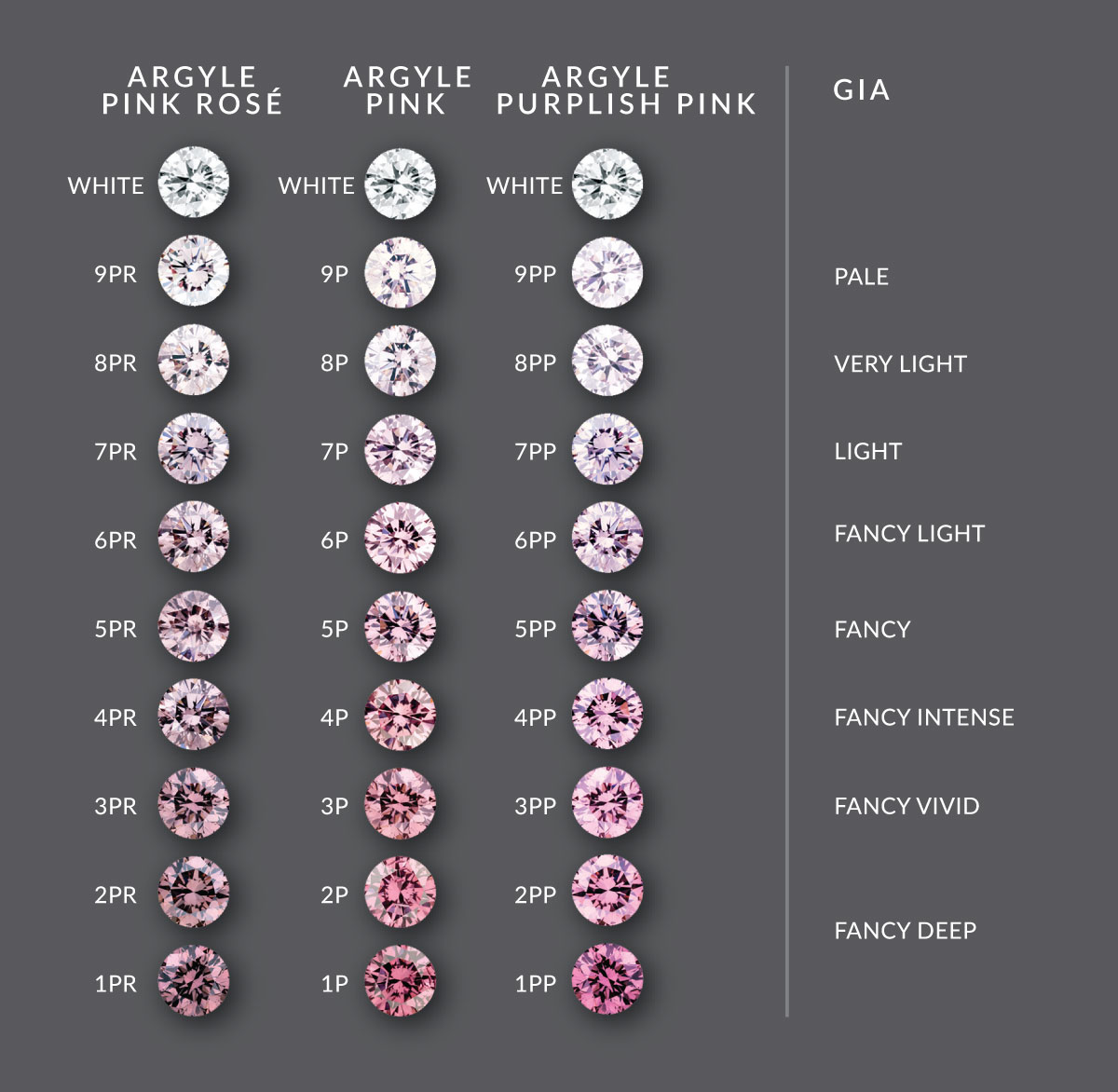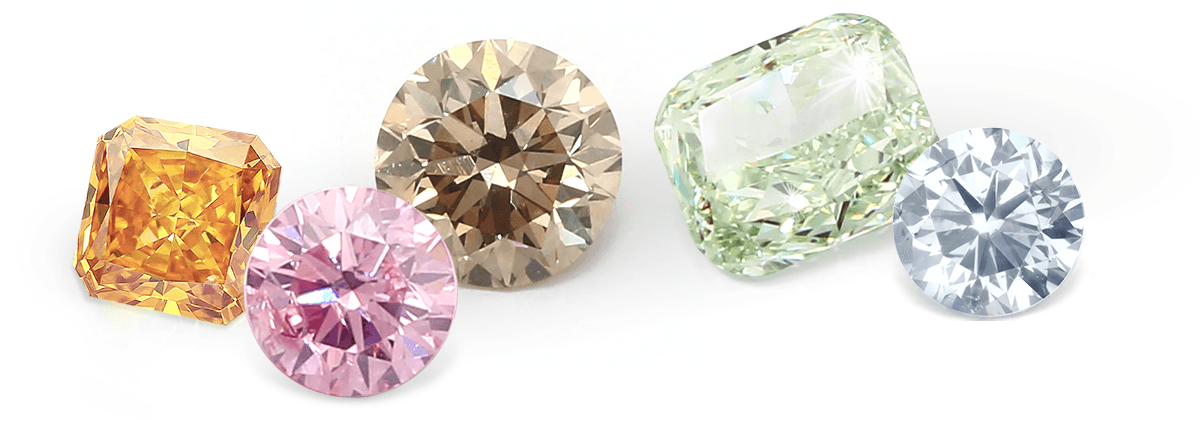How to select coloured diamonds

Nina’s can help make this simple for you. Call us at anytime and ask for help, the phone is often the best way
- Dunsborough +61-8-9759-1366
- Kununurra +61-8-9168-2646
Alternatively use our live chat, through the website, our senior team in the stores, and after hours are available to chat. If not we will get back to you as soon as possible.
Decision points
- What is your reason for making this purchase?
Investment (this is often a loose stone), engagement, dress ring… etc - Decide on a 'ball park' budget. Does your budget include a setting? (Coloured diamonds can be purchased on almost any budget - so don’t be discouraged!)
- Learn as much as you can.
- Only ever buy naturally coloured diamonds.
- Make sure you can see a 360º image of the stone or the piece of jewellery when buying online.
- Try to buy jewellery that is at least 18k gold, it is far more resilient and can last twice as long as 9k gold.
Pick a colour
The image below shows a rough guide of the most to least expensive natural coloured diamonds in the current market (2018).

Investing
Deeper colours give the best investment return and jewellery impact. Of course, they are the most expensive (with the exception of black and champagne)!
If purchasing pink stones for investment only, buy diamonds with certificates or lot numbers that give you Argyle provenance.
When shopping, bear in mind, if it seems too good to be true, it’s too good to be true!
The image below gives an indication of the depth of colour of diamonds as classified by the Gemmological Institute of America (GIA).

Colour colour colour
Find the largest, best colour stone in your budget.
Sacrifice clarity for colour and size. Big black spots in the middle of a stone present very poor clarity and consequently less sparkle.
Perfection of cut is not as influential for coloured stone, the way it is for white stones. Often coloured stones are cut to enhance the colour, so symmetry and proportions are sacrificed for size and colour.
In almost all circumstances deeper colour is more valuable.
Champagne stones are classified by the GIA as brown and the secondary hue is orange, green, yellow sometimes red, blue or even pink. It is up to personal choice.
Black stones are often heat treated with very poor clarity, they can be very inexpensive. Nina’s would not recommend these for investment purposes.
Purchase colour that is even.
There can be confusion when comparing Argyle classifications to GIA classifictions. The Argyle classification for pink diamonds has the strongest colour: 1P in pink, 1PP purplish pink and 1PR pink rosé and 1Y for yellow stones. The champagne stones were classified on the opposite scale with the darkest stones C7 and the lightest stones C1.
The image below gives a rough indication of how the Argyle colour grades relate to the GIA classifications.











The information below is required for social login
Sign In
Create New Account